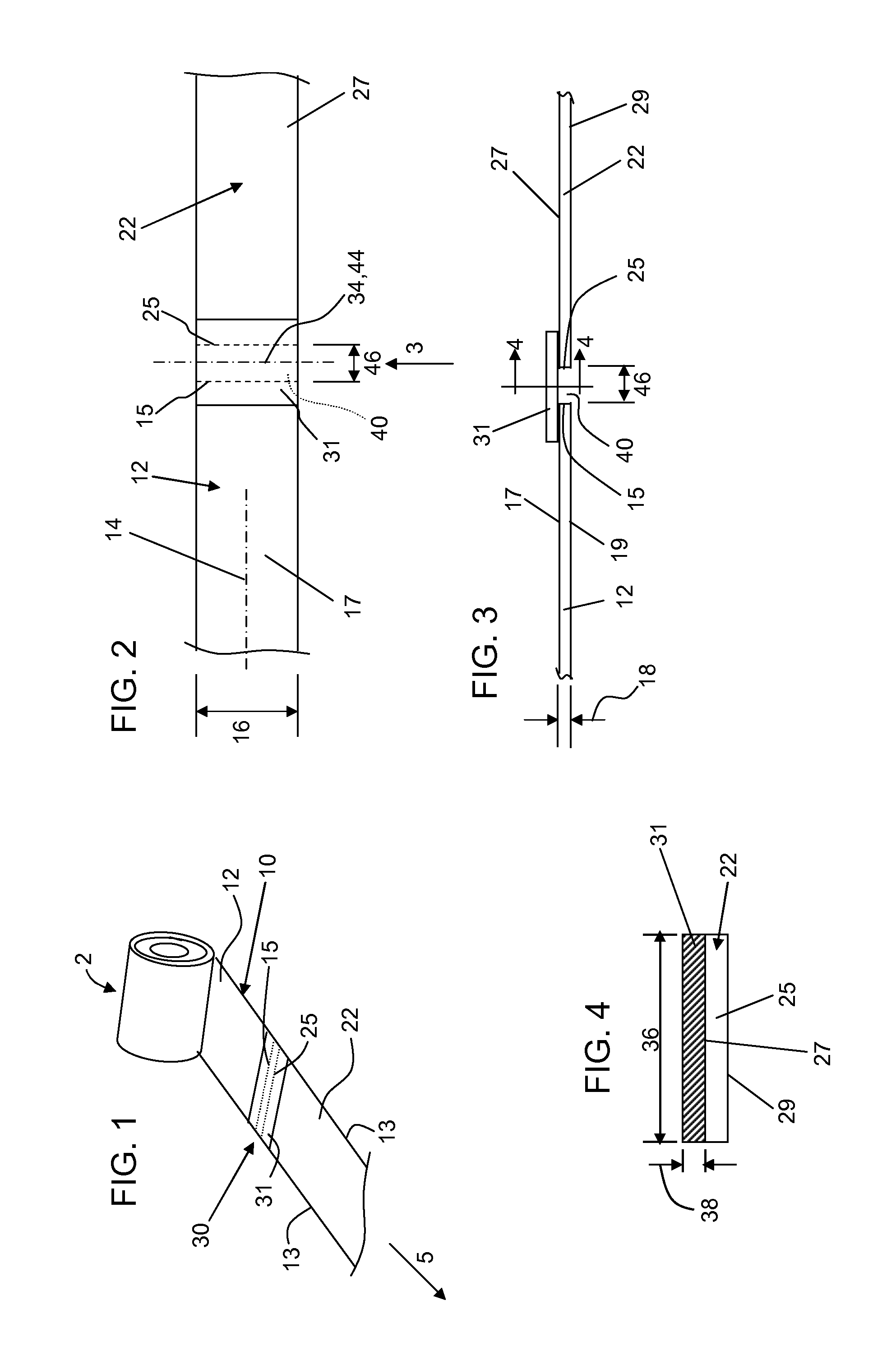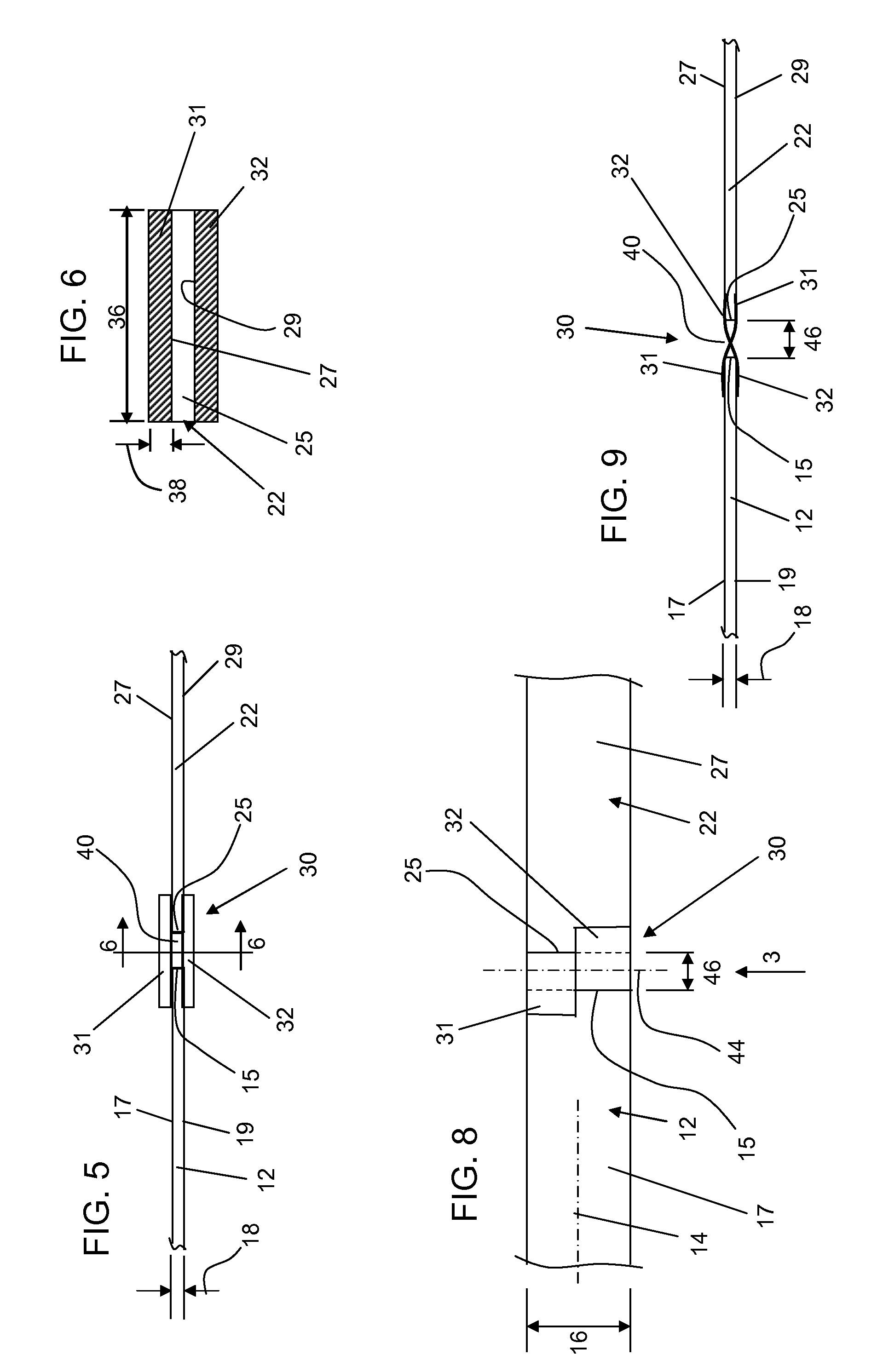Structures and methods for splicing glass ribbon
- Summary
- Abstract
- Description
- Claims
- Application Information
AI Technical Summary
Benefits of technology
Problems solved by technology
Method used
Image
Examples
example 1
[0110]A splice member 31 having a thickness of 50 μm, a width of 250 mm, and a Young's modulus of 1 GPa, is applied to the major surfaces 17, 27, wherein gap 40 is 100 μm (corresponding to splice length). A 10 kgf (100 N) would produce a stress of 8 MPa, and a calculated strain of 0.8% (corresponding to a change in splice length of 0.8 μm).
example 2
[0111]The splice member 31 and gap 40 are the same as in Example 1, except the splice member 31 has half the thickness (i.e., 25 μm).
[0112]Particularly: thickness of 25 μm; width of 250 mm; Young's modulus of 1 GPa; and gap of 100 μm.
[0113]In this example, a 10 kgf would produce a stress of 16 MPa, and a calculated strain of 1.6% (corresponding to a change in splice length of 1.6 μm).
example 3
[0114]The splice member 31 and gap 40 are the same as in Example 1, except the splice member 31 has a lower modulus (i.e., 0.5 GPa).
[0115]Particularly: thickness of 50 μm; width of 250 mm; Young's modulus of 0.5 GPa; and gap of 100 μm.
[0116]In this example, a 10 kgf would produce a stress of 8 MPa, and a calculates strain of 1.6% (corresponding to a change in splice length of 1.6 nm).
PUM
| Property | Measurement | Unit |
|---|---|---|
| Weight | aaaaa | aaaaa |
| Fraction | aaaaa | aaaaa |
| Thickness | aaaaa | aaaaa |
Abstract
Description
Claims
Application Information
 Login to View More
Login to View More - R&D
- Intellectual Property
- Life Sciences
- Materials
- Tech Scout
- Unparalleled Data Quality
- Higher Quality Content
- 60% Fewer Hallucinations
Browse by: Latest US Patents, China's latest patents, Technical Efficacy Thesaurus, Application Domain, Technology Topic, Popular Technical Reports.
© 2025 PatSnap. All rights reserved.Legal|Privacy policy|Modern Slavery Act Transparency Statement|Sitemap|About US| Contact US: help@patsnap.com



